18 June 2019
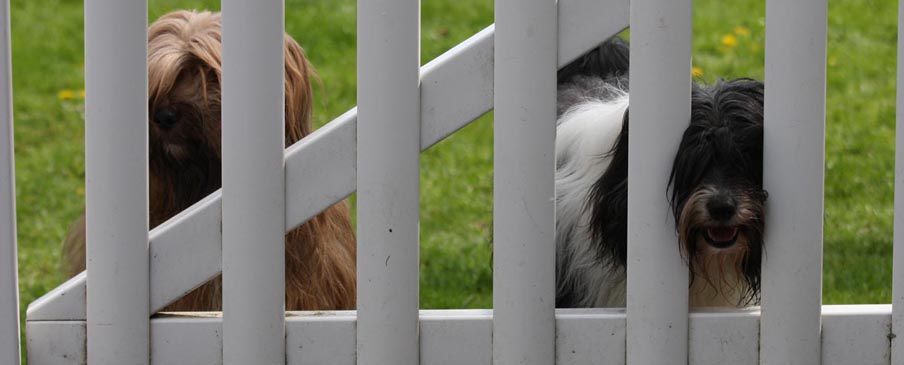
Izzie and James, our foundation dam and stud. 2009.
(For the record, I began writing this blog post over one year ago, after venturing into the study and genetic testing of my personal dogs. I have learned so much and yet? There is still boatloads more for me to learn about this topic. Wait ’til I get my microscope.)
In September 2006, Nina Wagner offered me a choice of puppies with which to begin my breeding program. I vividly remember the two ‘red’ puppies who danced toward me, as I’d never seen that coat color before! I asked Nina what it was and she told me that the puppies were red brindles. Of the two? One had better movement and so, I chose Izzie to be my foundation bitch. Then, I had a choice of two black & white males and James was the little man for me. We drove back to Vermont and introduced the babies to my old geezers Max and Mia – and the rest is history; actually, it is ourstory ;>).
In March 2009, Alice Smith gave me a book to study: The Inheritance of Coat Color in Dogs by Clarence C. Little. For many years, this book has been considered the pre-eminent book on the topic of coat color.
Talk about dense! Little’s book is so technical, in 2009, I was barely able to manage the first 16 pages and I’d been a Neurology major at Mount Holyoke College, dreaming of becoming a neurosurgeon. I believe Little’s book is written for geneticists – but I did get a couple of truths out of it, even back then:
White (as in ‘the absence of pigment’) is ultimately dominant genetically and black comes next. After that? My, oh my, so many genes and variations . . . and then, we get down to recessive red brindle, if ‘brindle’ even exists in Tibetan Terriers.
Enter Hanne Mathiasen’s Tibetan Terrers – The Little People. If you don’t have a copy? Buy one! It is a wonderful book that was published in 2006 and is a joy to read and share. She’s also on FB, if you want to friend her.
In the beginning, I was sure about what to call different coat colors, as I had Nina telling me what they were. I repeated what she’d taught me about the tri-colored (banded) ‘brindle’ hair and didn’t think anything of it, until after she’d passed and someone else corrected me. This new person told me that red brindle = sable, not red brindle. And they also told me that golden sable was the correct term for what I’d always called ‘gold’. And that brindle didn’t exist in TTs. And with that one comment? I took issue and decided to venture into a study of the literature on coat color.
Dr. Helle Friis Proschowsky, DVM writes about the SABLE coat color on page 125 of Matthiasen’s book. She also writes about the genetic tricolored coat and the ‘greying’ gene. There are wonderful photos to study and compare how the different coat colors are described. In the meantime, let me share some of what I have learned.
‘Many TTs have a wrong description of their colour, partly because breeders are uncertain about the colour names, and partly because some colours can only be determined when the puppies are small, while others appear later.’ This is a quote out of Mathiesen’s book from an article written by Proschowsky on page 124. Many TTs ‘change color’ during their lives, with blacks going charcoal or silver and brindles going blonde. The fact that a brindle hair is a tri-colored hair is also confusing, as keeping a TT in a ‘puppy cut’ allows only one color of a tri-colored hair to show; hence, a red brindle looking blonde, in a puppy cut.

The lovely AKC CH Copper Goddess. Mum to Billie, Annabel and Ziva. Grandmama to Yogi and Questa. Great grandmama to Piccolo and Leo. Her regal profile and fabulous coloration, courtesy of Oskar and Izzie. 2018.
Melanin is responsible for pigmentation. It is present or absent in cells at the base of each hair follicle and is either black or red. Both colors of melanin can be produced in a melanocyte, but only one at a time, according to Proschowsky. This is what is behind the changing coat color in the TT. Initially, the cell might have produced black melanin and later, it might switch to red melanin depending upon the genetics that are particular to each dog. Or it might turn to charcoal or silver and I believe this would be evidence of two copies of the Recessive Black allele. I have seen it in several of my dogs and their test results declare ‘two copies of the Recessive Black allele’.
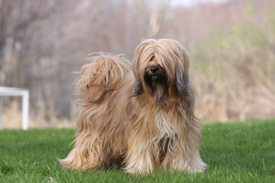
Izzie, CH Shalimar Izzie of Kensington. Our foundation bitch.
Proschowsky calls Izzie’s coat color ‘Sable’. This is what I was taught to be ‘Red Brindle’.
There is a greying gene and it is a dominant allele. Animals either get the greying gene or they don’t. It is less common to NOT have greying in a dark coat. (I wonder whether this is an expression of Recessive Black, as most of my black TTs turn charcoal and some with silver, at and after maturity.)
Proschowsky discusses a Particoloured coat and this is our classic jet black and bright white coat, with a lot of white. Not a ‘ticked’ coat, which I have seen and think it is beautiful. Best described as very finely enmeshed black and white, almost like stippling.
There is also a genetically Tricoloured coat, where versions of black, tan and white comingle on the dog but in a particular pattern. Genetic tris are most easily identified as young puppies by the tan at the base of the tail and above the anus. It is quite obvious, when you see it.
And a Grey or Silver or Charcoal coat that is evenly colored was most probably a black coat at birth that greyed later on, sometimes early and sometimes later. Gryffin was born jet black with some white. By six months of age, he was thoroughly silver and a surprise to his breeder and his humans! (I believe this is the phenotype expressing a recessive black genotype.)
Now, The Tibetan Terrier Book by Jane Reif uses different language to describe these same coat colors. And beginning with the black coat, Jane introduces the idea of the ‘Buddha mark’, a touch of white on the head or chest of a black dog – not mentioned at all in Mathiasen’s book. This mark is thought to bring ‘luck’ to the dog and its owner. I interpret this as a detail of ‘coat pattern’ and not ‘coat color’. And what Jane Reif brings to the discussion is the fact that there are several very highly qualified stewards of our breed and they use different language to describe the same thing.
When my fuse got lit about the lack of brindle in our breed comment, I decided to get serious and bought a microscope. Soon, as in sometime this summer, I intend to do a visual exploration of coat color at the microscopic level. I bought the most interesting microscope that will run off my phone and allow me to take photos of what is under examination. I am so excited. Soon, we’ll be able to broaden this discussion with photographs to compare and discuss.
With Billie’s most recent and final litter of brindle, black and black & white puppies, we’ve welcomed Campari into our lives. She is what I’ve been striving for, as a throwback to our foundation bitch Izzie’s coat color: red brindle or sable, depending upon from whom you learned how to describe it. She doesn’t have a Buddha mark (not to be confused with the Kiss of Buddha kink in your TT’s tail) – but she does have a big white collar, white blaze, white muzzle and the always entertaining white tip of the tail.
Going forward, I have more of my TTs to test and am about to test my second red brindle/sable boy. I am lucky that my foundation bitch born in 2006 is still alive & healthy. My plan is to test Izzie, Coppi, Leo, Campari and our new puppy from Slovakia . . . all in an effort to better understand the genetic mechanics behind the coat colors I’m breeding.
Thank you for hanging in there with me. I am developing a spreadsheet with photographs and genetic test results and would love to have more data. If you have thoughts or breeding experiences to share, please do so by personal email to me at wendyll.behrend@gmail.com. For the record, I have been using genetic coat color tests from vetdnacenter.com
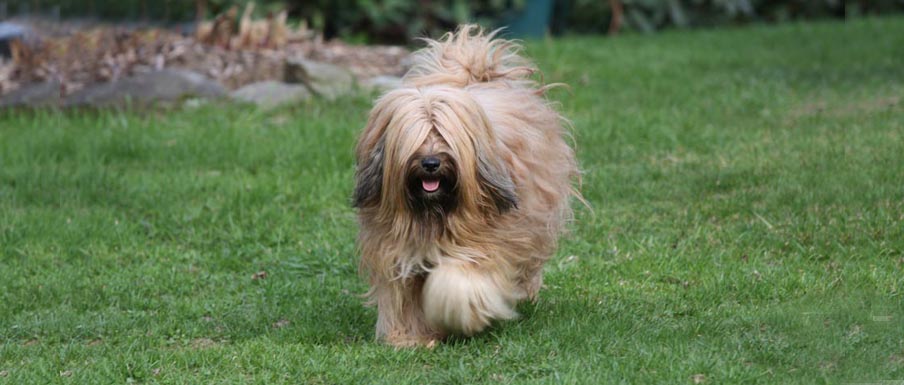

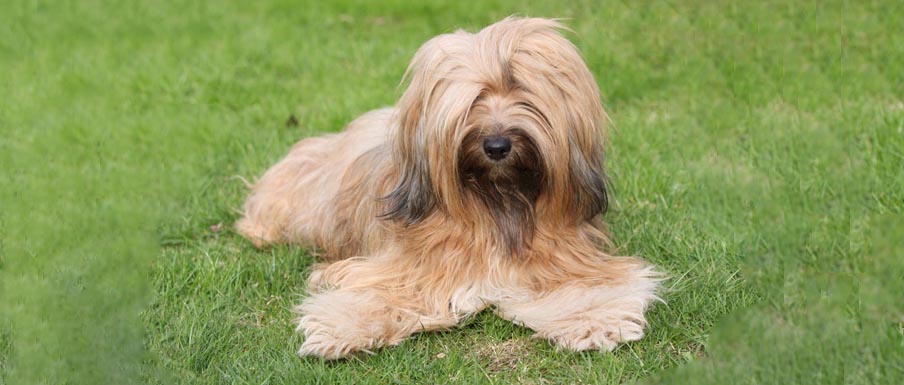
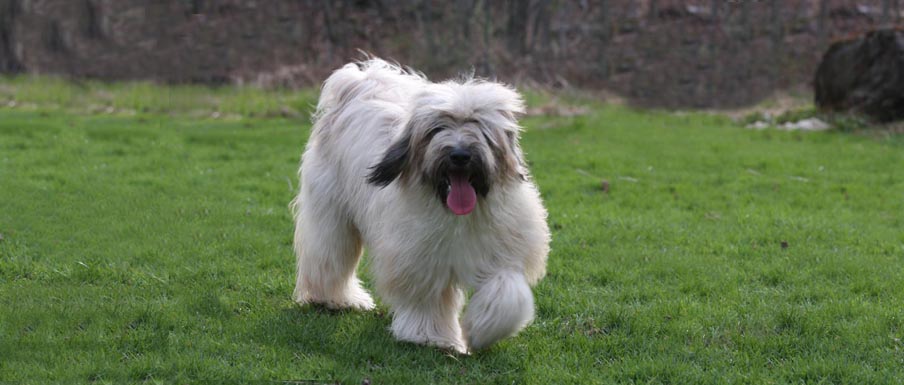
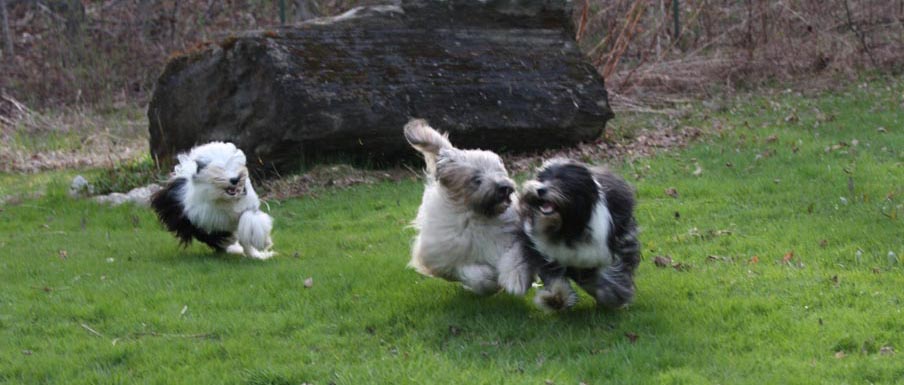
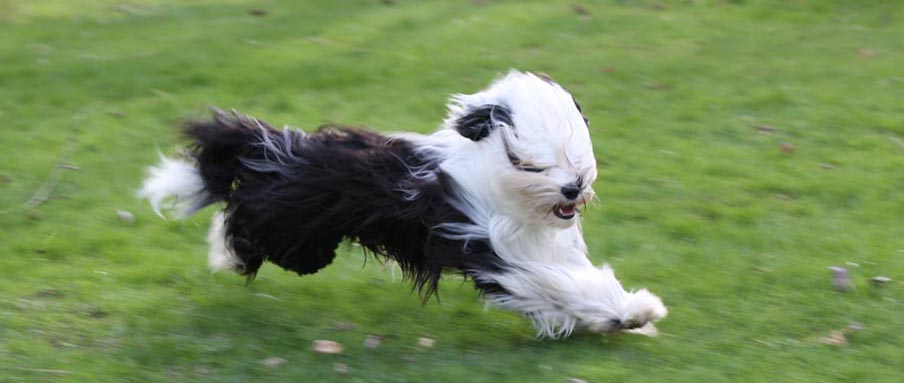

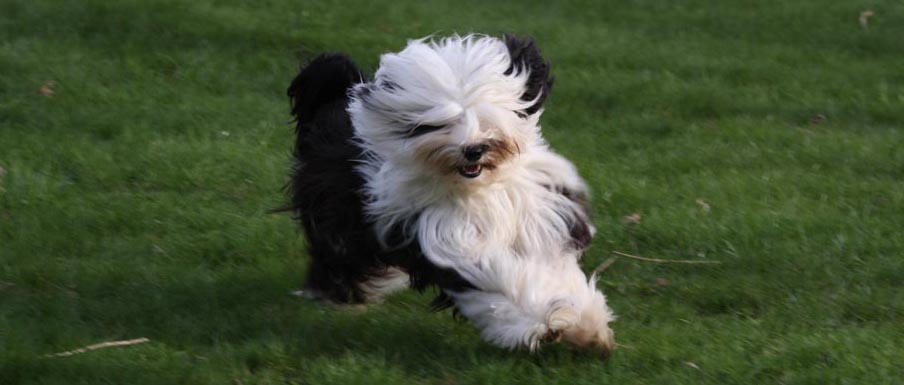
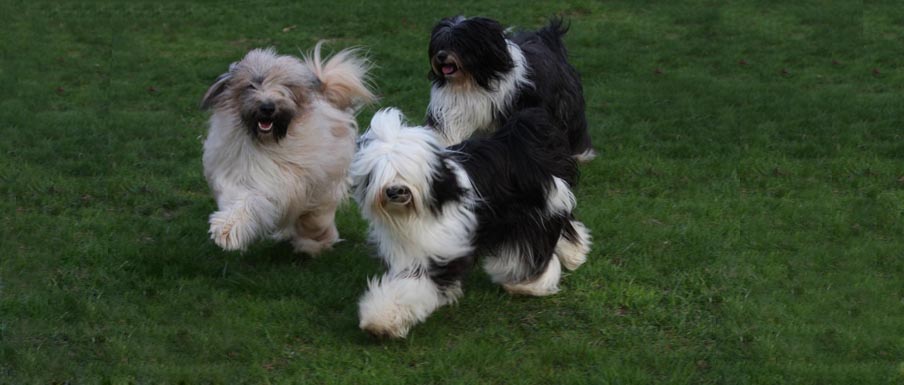





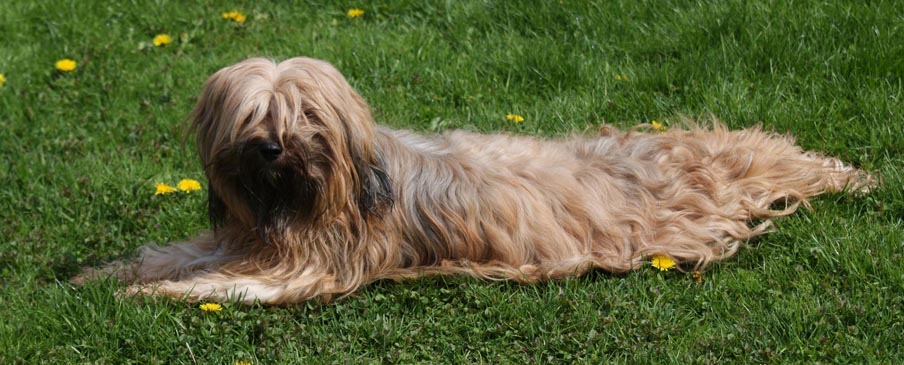
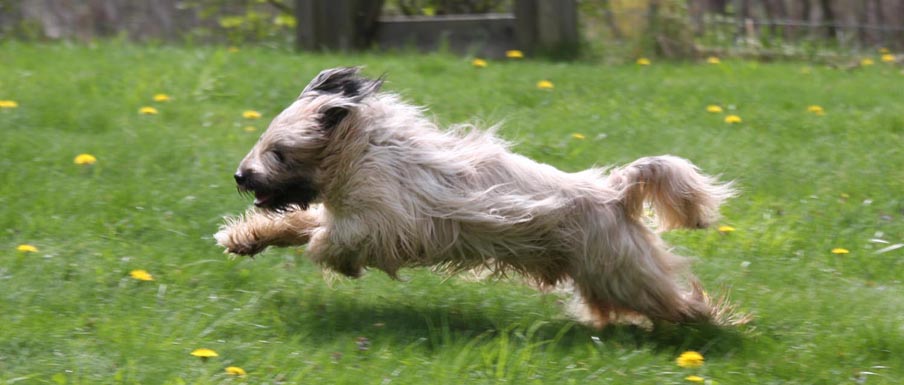

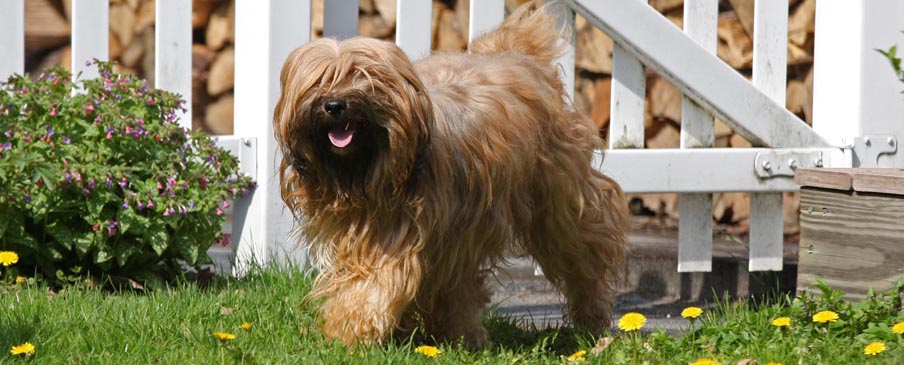
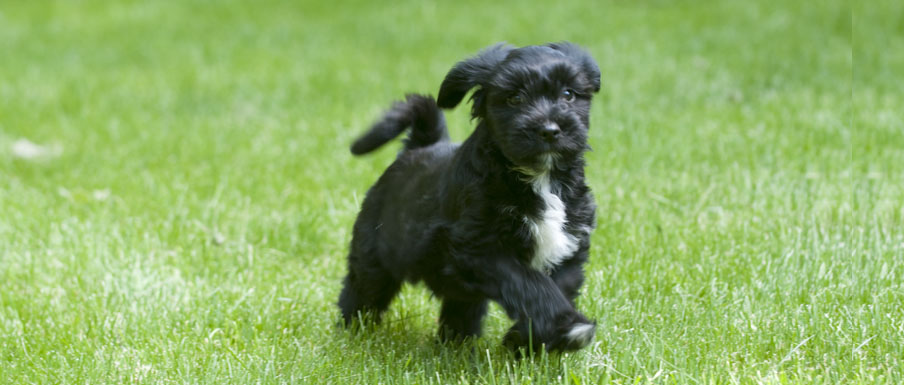

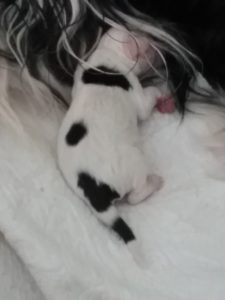

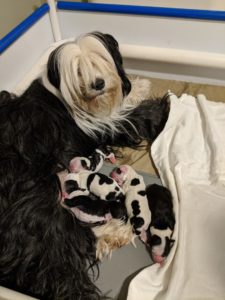


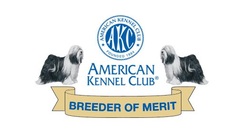
I just found your web site this morning. I would like to find a good used Tibetan (ha). We live in Florida. Vermont is awfully far, but I am retired now and can travel more now. I do not think I would make a choice about a dog based on colors, although I feel like my golden TT’s coat was easier to deal with than my guy with a white and black coat.